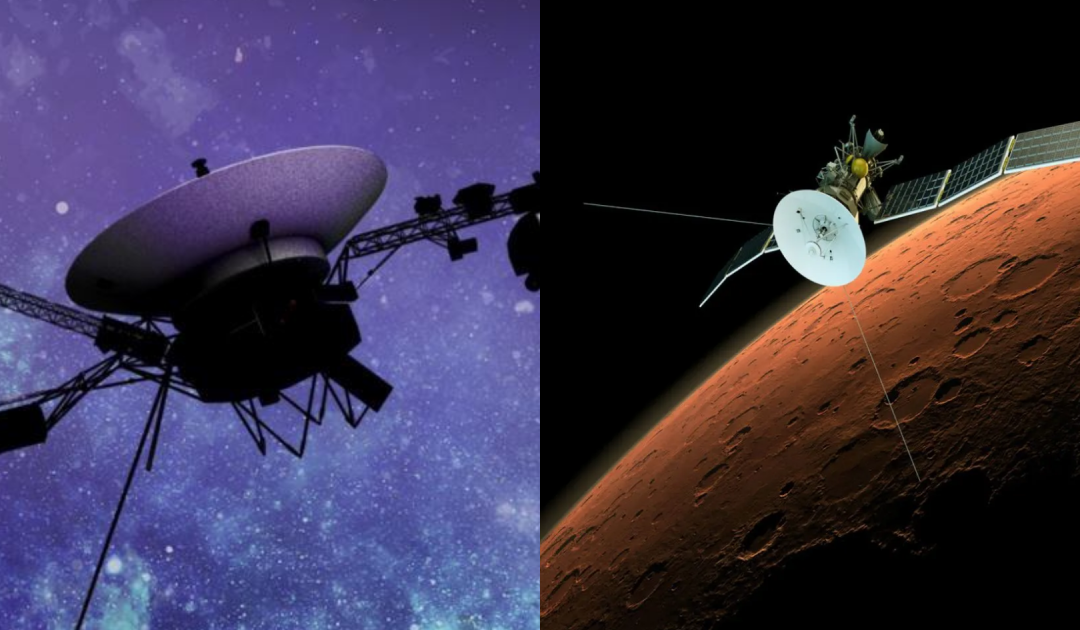NASA’s Voyager 1 spacecraft left Earth over four decades ago and is still impressing scientists today
NASA has managed to reconnect with a spacecraft that is now an incredible 24 billion kilometers away from Earth using a radio that had not been used since 1981.
If you thought space exploration was impressive before, wait until you hear this story about the Voyager 1 spacecraft.
What is NASA’s Voyager 1 spacecraft?
This legendary craft has been exploring space along with its companion, Voyager 2, for over 47 years.
These two are the only spacecraft currently operating in the vast expanse of interstellar space.
Recently, Voyager 1 went silent, which caused some worry for NASA.
Thankfully, the space agency has now reconnected with its radio transmitter, which is onboard the spacecraft, located more than 24 billion kilometers (or about 15 billion miles) from Earth.
Why did Voyager 1 fall silent?
Oddly enough, the spacecraft switched off one of its two transmitters for reasons that remain unclear, so now experts are trying to piece together what went wrong.
Given how old Voyager 1 is, there is always a risk of technical issues cropping up, which means the mission engineering team has their hands full working to keep it in good condition.
Scientists believe that the transmitter was turned off when the spacecraft’s fault protection system activated, a mechanism designed to respond to any problems onboard.

Voyager 1 ran into problems with its transmitter
NASA
NASA explained that when the spacecraft’s power usage reaches critical levels, the fault protection system steps in to save energy by shutting down non-essential systems.
It might take weeks for NASA’s team to find out exactly why this system was triggered.
Usually, when NASA’s Jet Propulsion Laboratory in Southern California sends a command to Voyager 1 through the Deep Space Network, the spacecraft responds with engineering data, allowing the team to see how it handled the command.
This process can take a few days.

A photograph of Jupiter taken by Voyager 1
Oxford Science Archive/Print Collector/Getty Images
When the team sent out a command to the silent Voyager 1, it took an incredible 23 hours for the instruction to travel 24 billion kilometers from Earth to the spacecraft and another 23 hours for the response to return.
That is quite a journey for a signal.
On October 16, when the team instructed Voyager 1 to activate a heater, the command activated the fault protection system even though the spacecraft had enough power to follow through.
By October 18, it became clear there was an issue because the spacecraft was no longer communicating with Earth using its X-band radio transmitter, making it difficult to pick up the signal.
The team suspected that the fault protection system had slowed down the data transmission, affecting the X-band signal.
Later that day, engineers detected the signal again, and Voyager 1 seemed stable for a while, but communication was lost once more the following day.

An image of Saturn taken by Voyager 1
Heritage Space/Heritage Images/Getty Images
The team concluded that Voyager 1’s fault protection system had activated twice in that period, which led to the X-band transmitter being turned off.
How did NASA reconnect to Voyager 1?
NASA eventually discovered that Voyager 1 had been using a second radio transmitter known as the S-band, which hadn’t been used to communicate with Earth since 1981.
This transmitter works at a different frequency, and its signal is much weaker.
“It uses a different frequency than the X-band transmitters signal is significantly fainter,” wrote NASA’s Tony Greicius in the Voyager Blog.
“The flight team was not certain the S-band could be detected at Earth due to the spacecraft’s distance, but engineers with the Deep Space Network were able to find it.”
Fortunately, when the Deep Space Network found the S-band signal, they sent a command on October 22 to confirm it was working.
The team has now verified that the S-band transmitter is functioning properly and is working to bring Voyager 1 back to normal operations.

